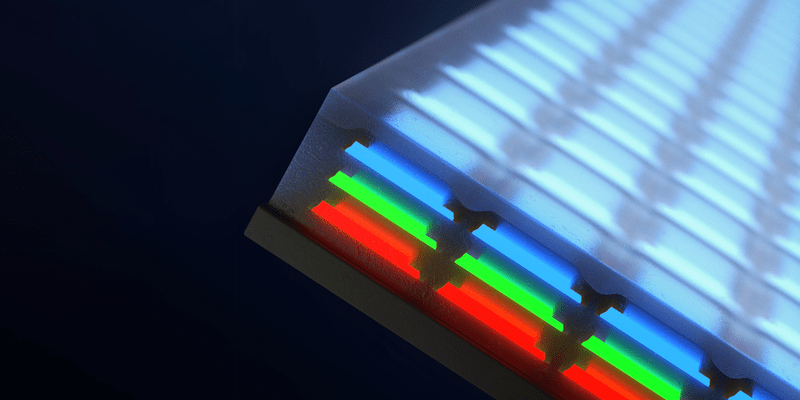
If you zoom into the screen you are reading this on, you’d see an extremely fine pattern of red, green, and blue emitters, probably LEDs of some kind. This somewhat limits the resolution you can obtain since you have to cram three LEDs into each screen pixel. Engineers at MIT, however, want to do it differently. By growing thin LED films and sandwiching them together, they can produce 4-micron-wide LEDs that produce the full range of color, with each color part of a vertical stack of LEDs.
To put things in perspective, a standard TV LED is at least 200 microns across. Mini LEDs measure upwards of 100 microns, and micro LEDs are the smallest of all. A key factor for displays is the pitch — the distance from the center of one pixel to the center of the next. For example, the 44mm version of the Apple Watch has a pitch of around 77 microns. A Samsung Galaxy 10 is just over 46 microns. This is important because it sets the minimum size for a high-resolution screen, especially if you are building large screens (such as when you build custom video walls (see the video below for more about that).
For example, consider a 4K screen with 3840×2160 pixels. If you can only do a 0.1mm pitch, your monitor will have to be at least 16 inches wide. A 4K TV with a 75-inch screen needs a 432 micron pitch, but to make a 24-inch screen with the same resolution requires 138 microns. While that means it is easier to make a large high-resolution display, it is harder to view the large screen up close. This can be a problem for computer monitors or VR headsets.
But imagine if these new LEDs would allow, say, 10 micron pitch. Then you could pack a 4K screen into a bit more than an inch and a half! VR headsets could easily be 4K if this were possible.
So far, the team has made a single multicolor pixel. Of course, they want to continue to produce a true array. Some of the overhead of that will reduce the pixel density, but it still could offer impressive results.
If you want to read more about microLED technology, [Maya] can help with that. Until this new tech goes mainstream, OLED is still the one to beat. You can actually make your own.
0 Commentaires